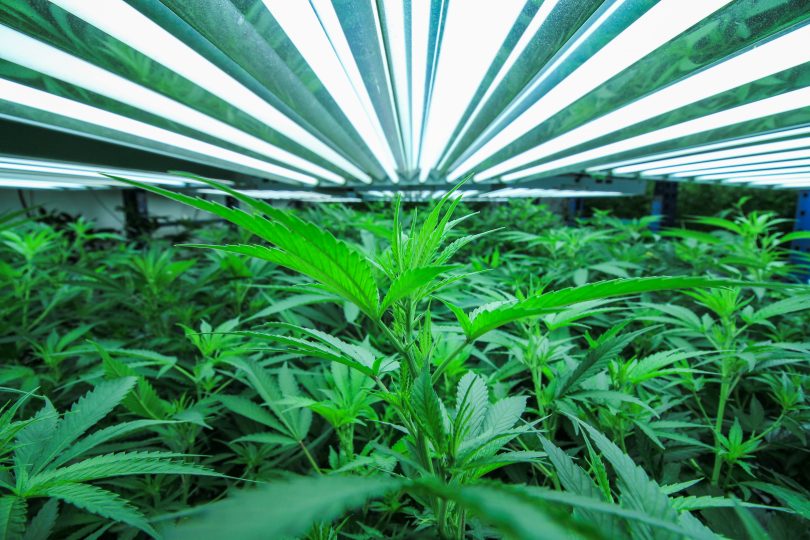As the market for smokable hemp and cannabis continues to grow in popularity, other industries are booming right alongside it. The flower market – which combines aspects from numerous other industries including business, agriculture, and science – is an ideal space for the development of cutting-edge technologies.
Cannabis and hemp are mainstream now, there’s no doubt about that; and the days of underground, backwoods grow operations are pretty much over in most developed markets. This means that cannabis and hemp growers, like any other farmers, are looking at innovative technological solutions to help get the most out of their crops.
Large-scale, modernized growing centers are becoming the norm as cultivators try to meet the growing demands of cannabis and hemp flower users. Various products on the market today can help improve the quality of the crop as well as the total output, all while minimizing the amount of hands-on work required to maintain it.
But mega-farms aren’t the only ones benefiting from this wave of agricultural cannatech. In the United States, citizens can grow their own hemp flowers which are now federally legal, and nearly half of the states in the U.S. allow residents to grow their own THC-rich cannabis. While this used to be rather time-consuming, new technologies have made it much easier for people to grow a few plants at home, and the number of people choosing to do so is rising daily.
These needs, both business and consumer, have left a gap that technology companies are rushing to fill with creative new products.
CLICK HERE or use the sign-up form below to subscribe to the CBD Flowers Business Newsletter.
Connected Growing
Growing cannabis and hemp that produces good-quality, smokable buds is hard work. Aside from the fact that these plants have very particular needs, there are many things that can go awry which could lead to the entire crop dying or becoming damaged beyond the point of repair – making your plants useless and worthless. Many of these problems would be difficult for a novice grower to troubleshoot and resolve on their own.
Naturally, this applies to both professional and hobbyist cultivators. “The intersection of cannabis cultivation and IoT will have a great impact on everyday consumers, especially those who consume cannabis medicinally,” explained Nicolas Ruiz, Co-Founder & Chief Product Officer of Cloudponics. “People will have the ability to control the quality and quantity of their cannabis without the fear of pesticides, sales taxes, or reliance on brick and mortar dispensaries.”
However, despite growing number of people switching to homegrown buds, the majority of cannabis and hemp consumers are still more likely to buy from dispensaries and shops rather than growing their own, which requires a certain level of commitment as well as a somewhat sizable initial investment. So, although many people aren’t willing to grow their own buds yet, the demand for both quality and quantity is skyrocketing and doesn’t seem to be losing momentum anytime soon.
But, as I mentioned above, cannabis/hemp is a very finicky plant that requires various external components to grow in a way that appeals to today’s sophisticated consumer. Existing agricultural equipment is being retrofitted to meet these growing demands while keeping costs as low as possible. Crop sensors, connected farming systems, and various automation technologies are being employed to create the optimum environment in which to grow premium hemp and cannabis flower.
Temperature, humidity levels, light cycles, and watering all need to be precise to maximize yields and get flowers that have the highest levels of cannabinoids and terpenes. Automated farming solutions allow farmers to control all these elements from an off-site location via their smartphones, tablets, and computers.
In addition to growing and maintaining your crops, technology can also help determine which buds are deceivingly bad. More and more growers are utilizing high-powered magnifying lenses with UV/IR illumination so they can spot mold and other nasties that are invisible to the naked eye before packaging their product for sale; a move that can negatively impact any farm’s reputation.
Sustainable, Eco-Friendly Cannabis
Farms consume A LOT of energy with their lighting needs and other electrically-powered systems. According to a 2017 study by Global Footprint Network, a California-based sustainability research organization, indoor cannabis facilities were found to have 370 times the ecological footprint than a standard greenhouse operation. Energy consumption was a prominent culprit.
Connected systems boast reduced energy use. But even better, these systems are constantly capturing data and using it to create predictive insights that can be used to reduce long-term energy output.
Technology is also allowing agricultural operations to go solar and further reduce their impact on the earth. Take Canndescent, the California-based cultivator who spent $3.75 million upgrading its 11,000-square-foot growing warehouse in Desert Hot Springs. The commercial-scale solar cannabis project can produce enough power to charge 20% of U.S. smartphones for an entire day. All this is accomplished through the use of 734 solar modules on seven different carport structures.
According to Canndescent founder and CEO, Adrian Sedlin, “We commissioned the solar project because the modern cannabis consumer deserves and demands that we create exceptional products using exceptional practices. As an industry coming of age right now, it’s natural and appropriate for the cannabis industry and Canndescent to lead the business community in addressing some of the world’s pressing challenges,” he said in reference to ongoing environmental issues plaguing the cannabis and hemp industries.
Seed-to-Sale Systems
Seed-to-sale systems are pretty much exactly what they sound like, they’re tracking systems that monitor cannabis and hemp flower from the moment the seed is planted to the point when it’s sold in a dispensary. This is a requirement for both medical and recreational flower and each state has its own internal system.
Seed-to-sale systems assign a tracking IDs (such as RFIDs, barcodes, or similar) to each plant which tracks it throughout its growing cycles, during harvest, and to the dispensary where it will eventually be sold. Who ever comes in contact with the plant or shipment can use the ID to search it through something called a software-as-a-service (SaaS) platform to find its origin.
This process requires growers and retailers to work together and comply with the state, which is exactly how a very specified software niche developed. As you can imagine, every single cannabis or hemp plant from the farm to the dispensary would be a monumental task without the help of cannatech.
This rigorous tracking allows state regulators to easily trace back any issues that may arise such as incorrect labeling or contaminated products. This not only serves to satisfy legal requirements, but it also help companies maintain quality and offer more detailed information about flowers to their consumers.
More Profits, Better Buds, Less Effort
There are numerous reasons why cultivation technology is the way of the future. Most obviously, it frees up a farmer’s time to grow more plants during a single harvest, and with much lower overhead costs, thus increasing end profits. It’s also the only way to control your cannabis or hemp grow environment for maximum cannabinoid and terpene levels.
A study conducted at Cowlitz County Cannabis Cultivation Inc.’s warehouse facilities in Washington State examined how much better upgraded farms fared than their old-fashioned counterparts. Cowlitz is using a new method to save space and maximize yields called Micro-grow pod cultivation. Here are the findings:
- High total cannabinoid levels: On average, the strains tested had 22.85% to 32.45% total cannabinoids.
- Cleaner plants: No use of pesticides, herbicides or fungicides. Free of heavy metals and contaminants.
- Lower operational costs: It was determined that the plants can be grown in less-than-optimal space and had lower electricity usage.
- Faster harvest time: All the plants were harvested in roughly 72 days, which meant farmers could cover 5 harvest cycles in one year.
“These successful initial test results provide preliminary evidence that we have a unique and effective technology that results in lower operating costs, more crop cycles per year and higher cannabinoid content than current industry norms,” states Rahim Rajwani, CEO of GreenStar. “We believe we have proven the proof of concept effectiveness of this technology. We are excited to continue pursuing further testing and leveraging this proprietary technology.”
He continued: “Not only did we see total cannabinoid content higher than industry norms, we also demonstrated the technology can generate cannabis flower at a lower cost per square foot of cultivation than current greenhouse technologies in use in the marketplace. In addition, the ability to grow cannabis without pesticides, herbicides and fungicides and absent of heavy metals and contaminants will put us at the forefront with regards to product quality and consumer confidence. Ultimately, further successful testing will generate a new revenue stream for the company.”
Final Thoughts
Although it can cost a bit to get set up, these technologies can be a long-term solution to help growers maximize their yields, save money, and deliver a consistently good product. No matter your needs, there are numerous different products that can be of use to your farm.









